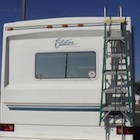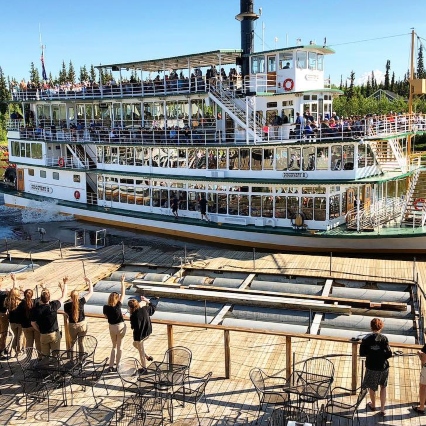Living in the desert
Cacti, birds, animals and people

Exploring the desert can mean living in the desert. It’s not always easy to find your own comfort zone: alone but not isolated; other RVs but far enough away that you still have privacy; close enough to a town to get good drinking water (Arizona is infamous for its poor drinking water); and a spot where you can eat out is always a bonus.
We chose Gun Sight Wash BLM (Bureau of Land Management). It is on Arizona Highway 85 on the way from Gila Bend to Rocky Point, Mexico. The camping area is just south of Why, Arizona, and north of Organ Pipe Cactus National Park. Why’s population is about 50 people at the most, while the larger community, Ajo (about 10 miles away), has a population of about 3,000. It’s a great “watch the birds and animals” place with lots of cacti and wildflowers.
The prime spots are on the edge of a wash (a wash is a creek bed that is usually dry except when the great flash floods fill it to the brim with fast-moving silty water—the floods can come out of nowhere and generally last only a few hours). Our perfect site was surrounded by desert bushes and trees and looked out at the hills (mountains, they call them) between here and Mexico.
What do you do all day out on the desert?
In the morning we took our coffee and sat under the awning to survey our kingdom.
A long-eared antelope jackrabbit watched us from a creosote bush across the way. Its ears were longer than its entire body. Do you know that jackrabbits don’t drink water? I guess they get enough from the foods they eat.
We watched the birds: We hung a couple of grapefruit out on the bushes and trees. They attracted a lot of birds—a family of Gila woodpeckers visit it constantly throughout the whole day and the goldfinches and doves and another beautiful little bird with a red head and breast we thought was a hepatic tanager visited a couple of times. (We have some field books on the birds, animals, cacti and wildflowers of the Southwest but they never look exactly like the pictures so we’re not always sure.)
Not many hummingbirds came to the feeder but goldfinches seem to enjoy eating out of it. The woodpeckers manage to feed from the hummingbird feeder even though they are about 10 times bigger than the hummingbird. They perched on the window frame (the feeder is on the window beside the kitchen table), leaned over and stuck their incredibly long tongues into the little holes in the feeder. Where there’s a will, there’s a way!
We identified the wildflowers and cacti: One of the most prolific and intriguing plants in the desert is the creosote. The bushes are so evenly spaced that sometimes you think they have been planted. Apparently the creosote produces a toxic substance to prevent other plants from growing too close. Other plants will grow underneath it only when the creosote has enough nutrition and the soil has been cleansed by the rain.
Often the green leaves are the only non-muted colour you see on the desert floor. As winter turns to spring, the tiny yellow flowers of the creosote start to brighten up the desert. The plants vary in size depending on how much moisture there has been.
Creosote is all over the desert and after even the slightest rain, the desert takes on a clean, distinctive aroma given off by the plant. They say that the creosote bushes seen at the turn of the century are still alive today. When older stems in the middle of the plant die off, new growth comes up around the edge.
The crucifixion thorn plant is rare but we found one right by where we parked. The thorns are extremely long and sharp and can easily puncture the sole of even a heavy hiking boot. The plant looked dead but apparently doesn’t start to blossom until June or July.
A fishhook cactus with bright yellow fruit was just over on the other side of the wash and the whole area is scattered with saguaro cacti—some standing on guard (I expect guarding the U.S./Mexican border from invasion by the foreign workers who jump the border) and others that look like soldiers doing multi-armed semaphore against the wispy-blue coloured sky background.
We explored the other trails: Organpipe Cactus National Monument is just down the road and dozens of trails went off into the desert. One trail we took went up behind Ajo (Darby Wells Road), where there are massive stands of organpipe cacti. It’s another area where you can dry camp but we thought it was too isolated. The hiking, birding and wildflowers are terrific!
Another area we found was Alamo Canyon. The road into the canyon is just before the entrance to Organpipe Cactus National Monument and travels through about five miles of rough terrain and unique desert vegetation before you get to the canyon itself.
Animals and people:
We heard, more than saw, the coyotes; watched quail scurrying back and forth across the road; and saw droppings from the wild burrows. We met a tiny horned lizard (I did call it a horny lizard, but was quickly corrected) on the trail and then were visited by a Mexican fellow who was on his way back to Mexico. The ironic thing is that he had to sneak into the U.S. but he has to sneak back into Mexico, too. If he let the Border Patrol take him back he would probably spend a couple of months in jail and from the sounds of him, he knows from experience. He had the nicest looking teeth I’ve seen for a long time.
RVers who dry camp out in the desert tend to quickly make friends and love to share information about great places and things to see and do. Just in the short time we were at Gun Sight Wash BLM, we visited and went out to dinner with folks who were on their way to bird-watch at Patagonia State Park and learned about more great sites; folks we first met in Laughlin joined us and we toured the area together and played card games almost every night we were together. They took off east and we’ve headed west back to Yuma again to stock up and slowly head north. We’ve never really explored the area around Lake Mead, Nevada, so that looks like a good place to go.
BLM – Arizona Dispersed Recreation Camping: Camping on public lands away from developed recreation facilities is referred to as “dispersed camping.” Most of the remainder of public lands in Arizona are open to dispersed camping, as long as such use does not conflict with other authorized uses or occurs in areas posted “closed to camping,” or in some way adversely affects wildlife species or natural resources.
BLM – California BLM – California Primitive Camping: Except for “special areas” with specific camping regulations, visitors are welcome to camp anywhere on BLM managed land.








